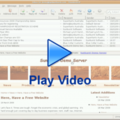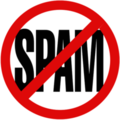How To Use Good Email Netiquette |
Netiquette, a term coined by blending Internet and etiquette, is a catch-all term for the conventions of politeness recognised in Cyberspace. In this article, we look at composing emails and share some tips that many Internet users overlook.
How To Use Good Email NetiquetteEmail Netiquette
Communicating only in words, from behind a computer screen does give us a degree of anonymity in the vastness of cyberspace. However, this doesn't exempt us from practicing correct and proper netiquette. Good netiquette may not sound all that important, but if your business life, personal life, or other professional dealings depend on the Internet, acquiring polished netiquette is vital to avoid jeopardising your business.
How to Send an Email
One of the most common abuses of email is misuse of the fields for specifying recipients - these being To, CC, and BCC. While the To field is fairly self explanatory, CC and BCC often need some introduction.
CC (Carbon Copy): The CC field of an email allows you to specify additional recipients for this email. While you may also specify multiple addresses in the To field, CC carries the semantic that 'this email is not addressed to you, you're just receiving a copy'. Both CC and To openly list all your recipients' email addresses.
BCC (Blind carbon copy): BCC also allows you to specify additional recipients, but as opposed to CC, using BCC will conceal these addresses from other recipients.
Tips for Good Email Netiquette
- Think before you send! People lose their jobs all the time over inappropriate emails. If you are feeling a bit heated, take a deep breath and have a drink of water. If you are about to send something you wouldn't want your boss to see, use a different email account.
- Don't send mass emails of a personal nature. Sending a personal email to every address in your contacts list goes some way to reduce the personal nature of the email. Consider starting a blog instead.
- Use BCC for mailouts. Besides respecting the privacy of your recipients, this is also a good security precaution, as viruses and spammers harvest email addresses from long CC lists.
- Use a descriptive subject heading. Your subject should reflect the general purpose of your email and make it easy for your recipient to locate the message at some time in the future. A classic example of a bad subject is 'Website', if you're emailing a web designer. Something like 'Changing the about page font' would be more useful.
- Don't SHOUT. Using all-caps on the Internet is equivalent to shouting at someone in real life. If you must capitalise headings, use Small Caps instead.
- Don't top-post.
A: It is difficult to read.
Q: Why is top-posting bad netiquette?
When you reply to an email, put your responses after the original text and trim off anything that is not relevant to the reply. - Don't send large attachments. Most mail accounts will not accept attachments over 3MB, and many not even more than 1MB. In addition to this, users with a slow Internet connection or limited space for emails will get very annoyed if you send them large files. Consider sending a link to a web page where they can download the file, or transfer the file using tools like MSN Messenger instead.


